Want to turn a green lane into a brown lane, tow a Gulaschkanone across a snowy field, or roam the Western Desert trashing Axis airfields? Get a 4×4. Want quick introductions to games of interest to realism relishers and old fogies? Read a 3×3. Prior to penning one of these articles I’ll play three tempting titles for at least three hours each. While it would be cavalier to call the reports that result from such brief auditions ‘reviews’, it’s conceivable they might lead to more prolonged playtests, and prompt or prevent the odd purchase.
Hunting Unlimited 3

Could my desire to play hunting sims at this time of the year have anthropological/genetic origins? Seeing the signs of approaching winter in the fields and woods around Bramley End, am I subconsciously driven to stock my larder in readiness for the hard times ahead?

Usually my retro deer culling diversion of choice is the evergreen Deer Hunter 2005. This year for a change I’ve been playing its contemporary and main rival, Hunting Unlimited 3.
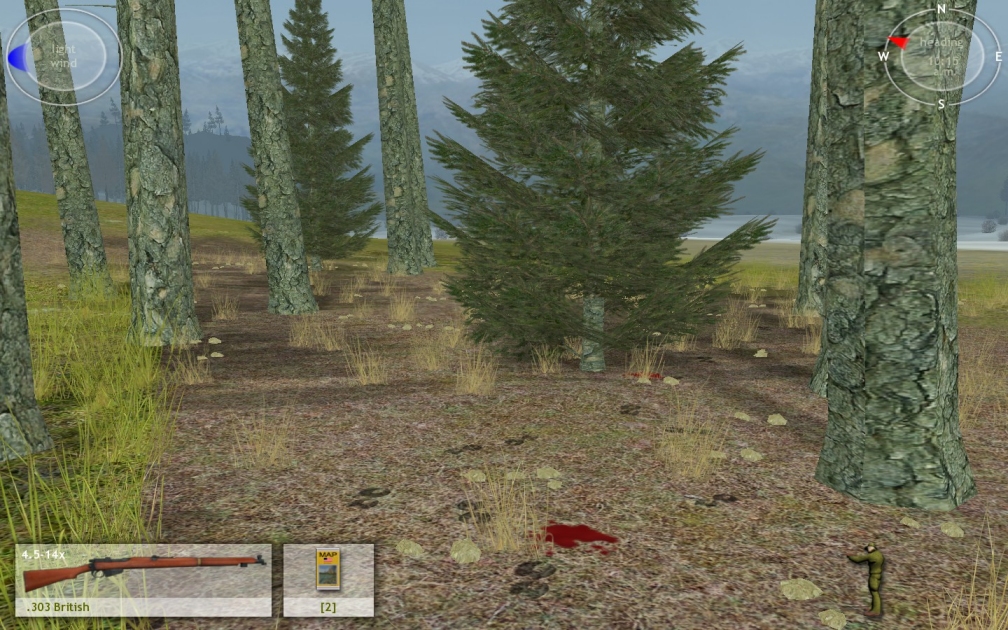
Before SCS Software realised it was possible to make a lot of people extremely happy by producing great trucking sims, they made a fair number of people (mostly Americans) moderately happy by making solid hunting sims. The Czech-made Hunting Unlimited titles slopped onto the leaf litter between 2001 and 2009. From fairly fuzzy memory, none were finer than HU3, a 2004 release available currently – but not for much longer (the Steam offer ends in 30 hours) – for a tempting three quid.
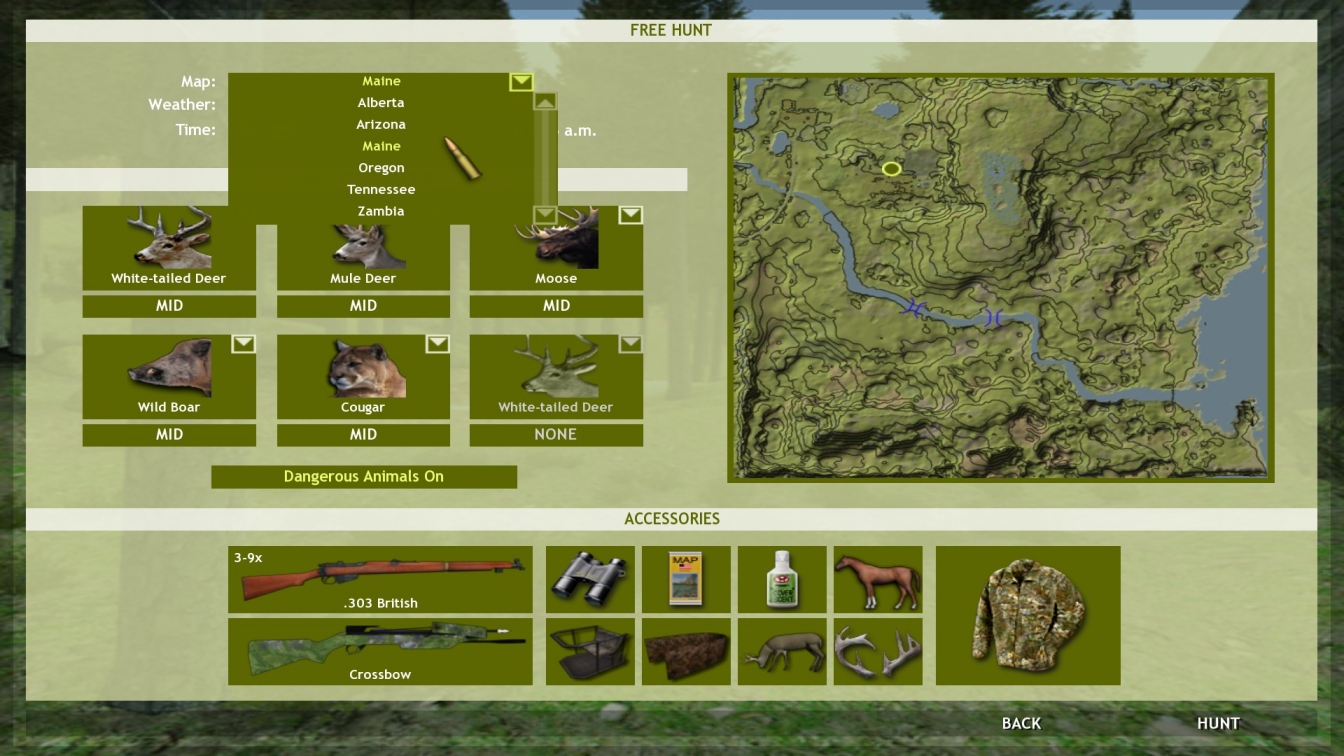
For the price of a cup of coffee, you get to stalk and slay cougars, grizzlies, and eight species of ungulates, on six sizeable North American maps, and reduce Zambia’s populations of lions, elephants, and kudu. You don’t get the original release’s attractive gatefold CD sleeve with its embossed animal heads and bold boasts (‘America’s favourite hunting series!’ and ‘When it comes to hunting, there’s nothing more real.’)
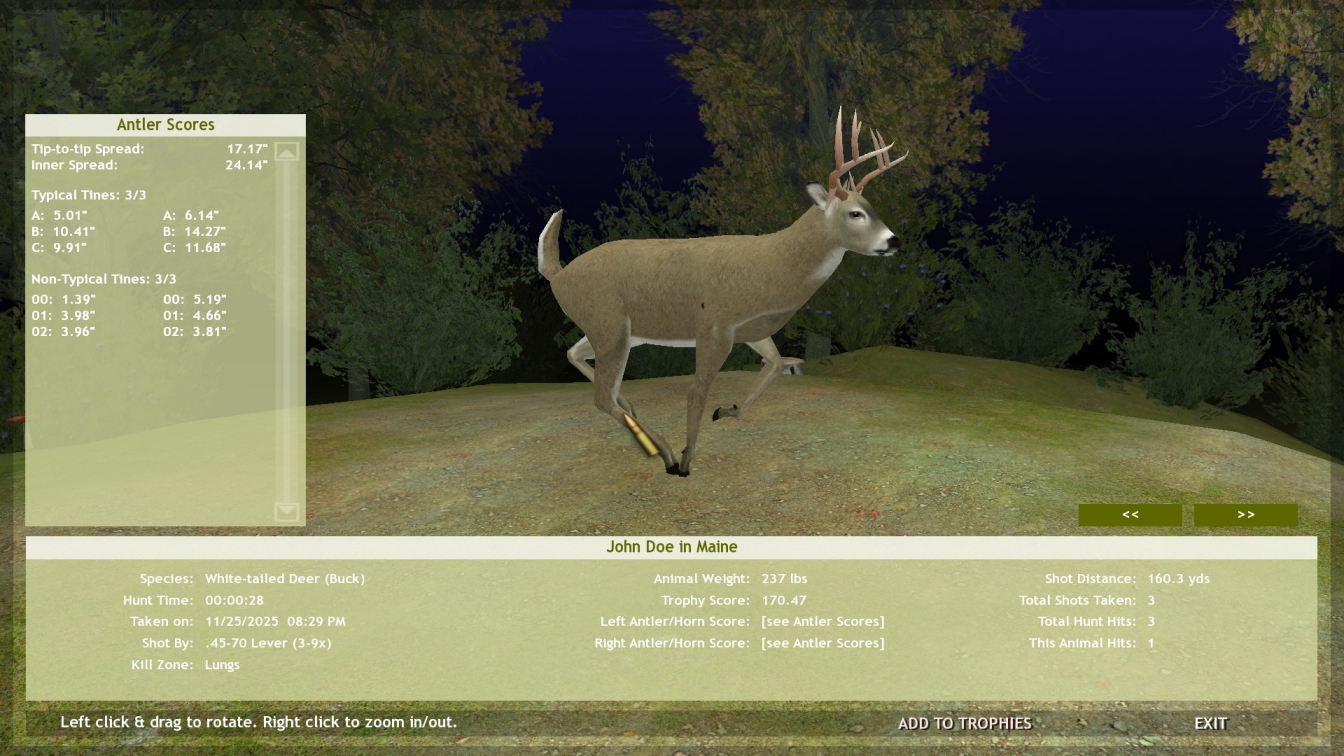
Illogically, while the idea of killing polygonal pachyderms and African lions has never appealed to me, I’m perfectly willing to spend hours engineering the literal downfall of virtual mulies and whitetails. Maybe it’s because I’ve never watched a nature documentary showing deer mourning or grieving. Perhaps it’s because concocting a quick, conscience-salving backstory in my head is easier when arrogant pith-helmeted big game hunters are completely out of the mental picture.
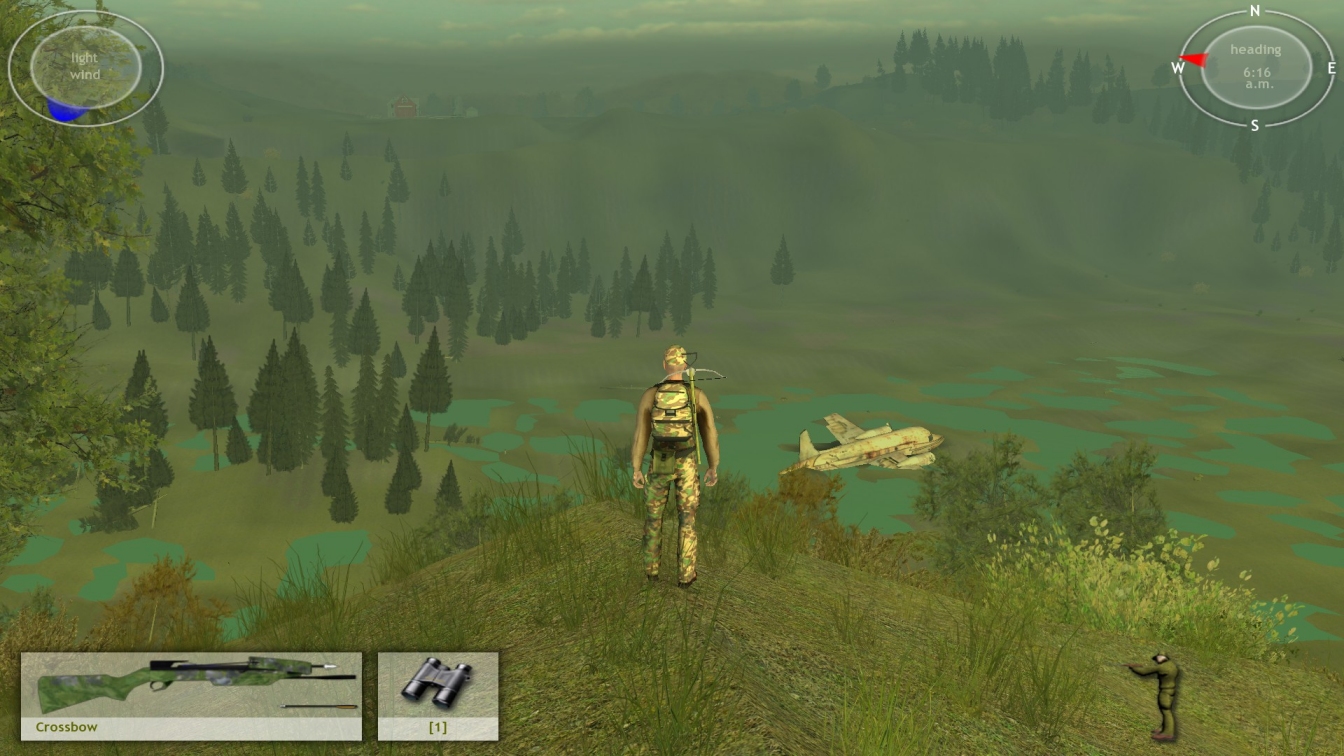
Although HU3’s ramble zones are not quite as verdant as DH2005’s, what they lack in vegetation density, they make up for in scale, ambient audio, and scenic flourishes. Finding a plane wreck, ruined mission, spectacular waterfall, or spooky shack on the other side of a crested ridge, is almost as memorable as discovering a herd of huntables.
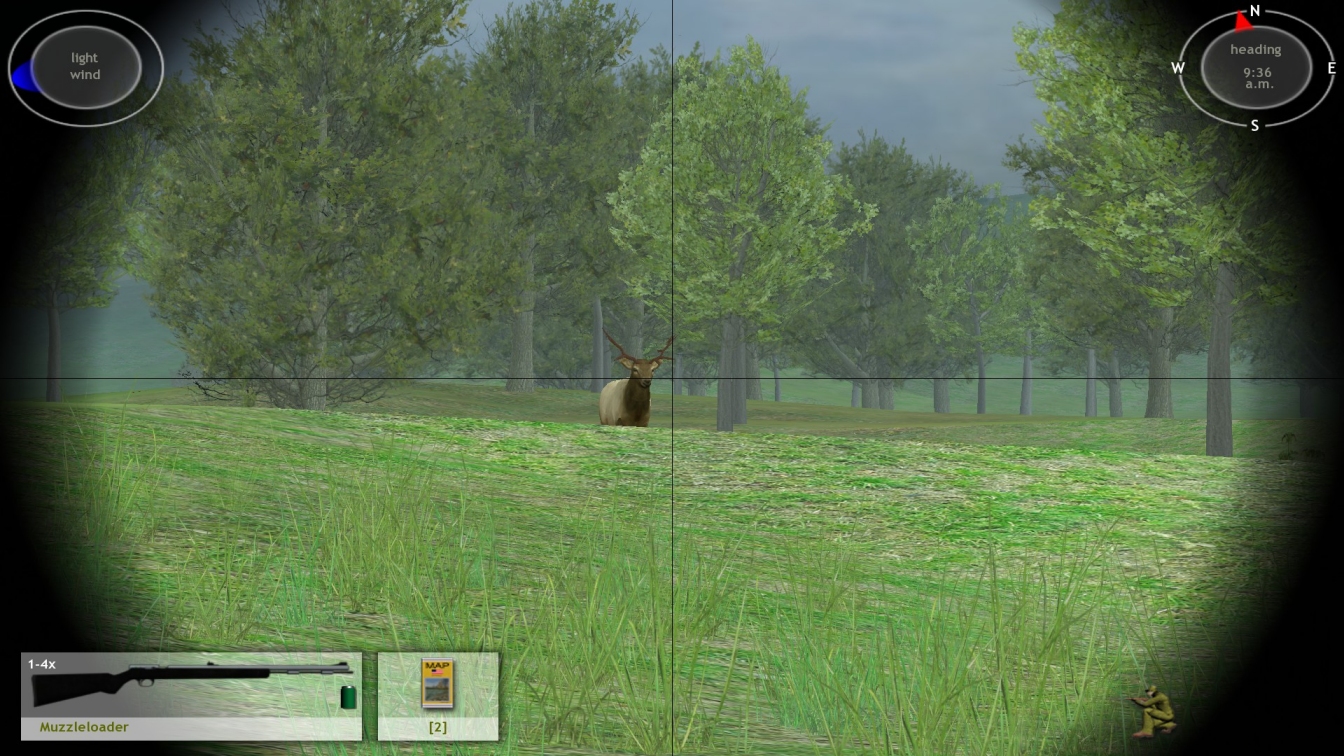
Because the lighting is so simple, the colour palette so muted, and there’s relatively few bushes, trees, rocks and tussocks, buck spotting in this title is kinder on old eyes than buck spotting in a modern equivalent would be. There’s still numerous occasions when you spot something promising in the far distance, scrutinise it with binoculars or telescopic sight, and discover it’s actually a stump or boulder. However, most of the time HU3 doesn’t feel like a 3D hidden object game.
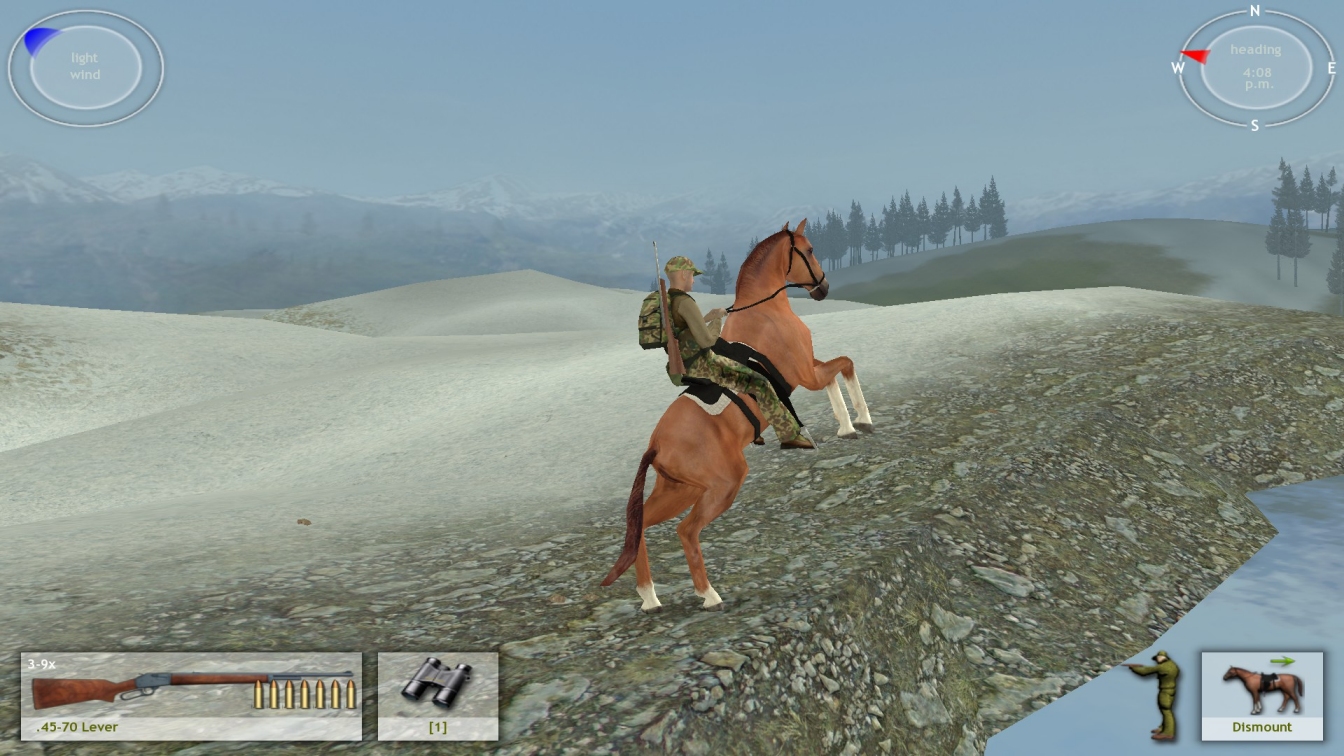
Importantly, SCS weren’t afraid of making their customers work and walk. Even with ‘free hunt’ population densities set to high, you generally need to wander a while to locate targets.
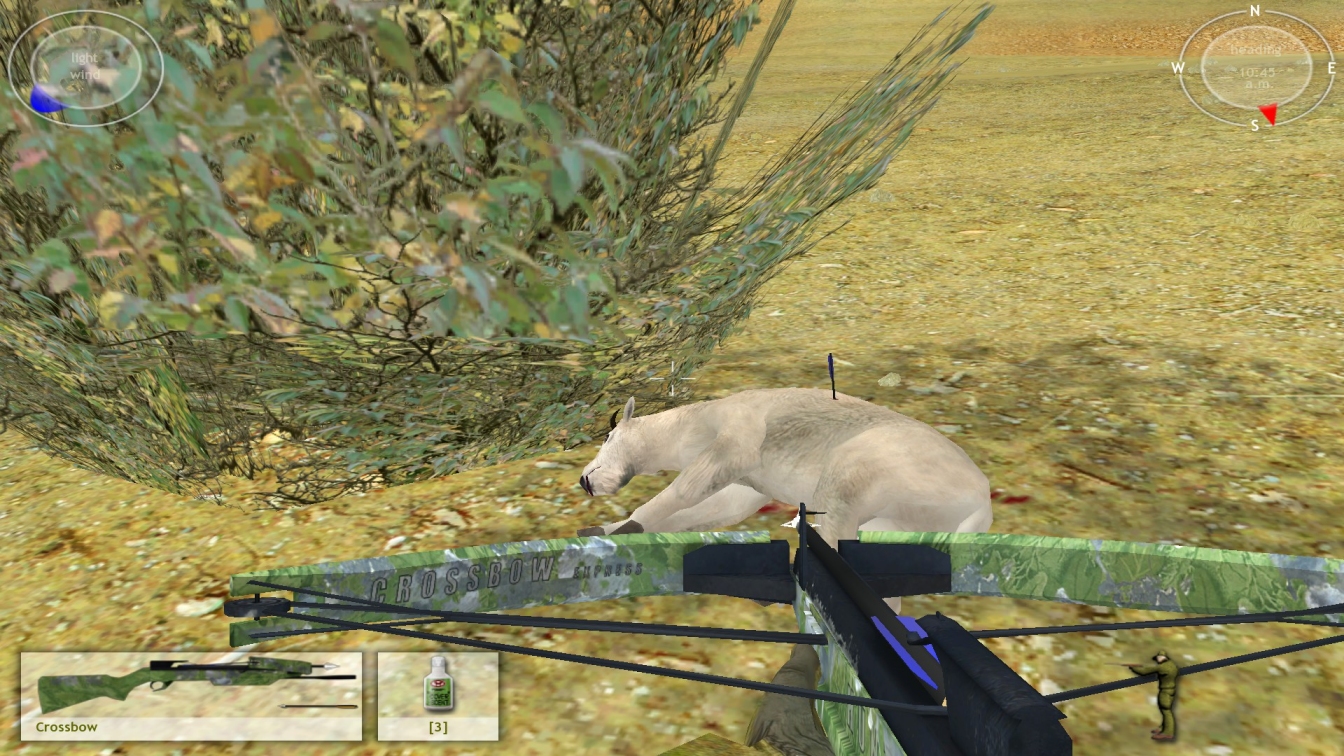
Where HU3 couldn’t quite compete with its Brazilian-made peer, was in the animation and AI departments. The beasts in this sim don’t have quite the range of naturalistic movements, and often don’t react as plausibly when spooked.

In Southlogic’s classic the price of missing a shot or lightly wounding an animal can be high. In this passable substitute, second chances aren’t unusual as evaders and bleeders generally don’t go all that far. This characteristic, in combination with the absence of a difficulty slider in the options, might be a problem if the thoughtful Praguers hadn’t provided challenge stiffeners in the form of bows, handguns, and a muzzleloader.
* * *
Outlaws + Handful of Missions Remaster
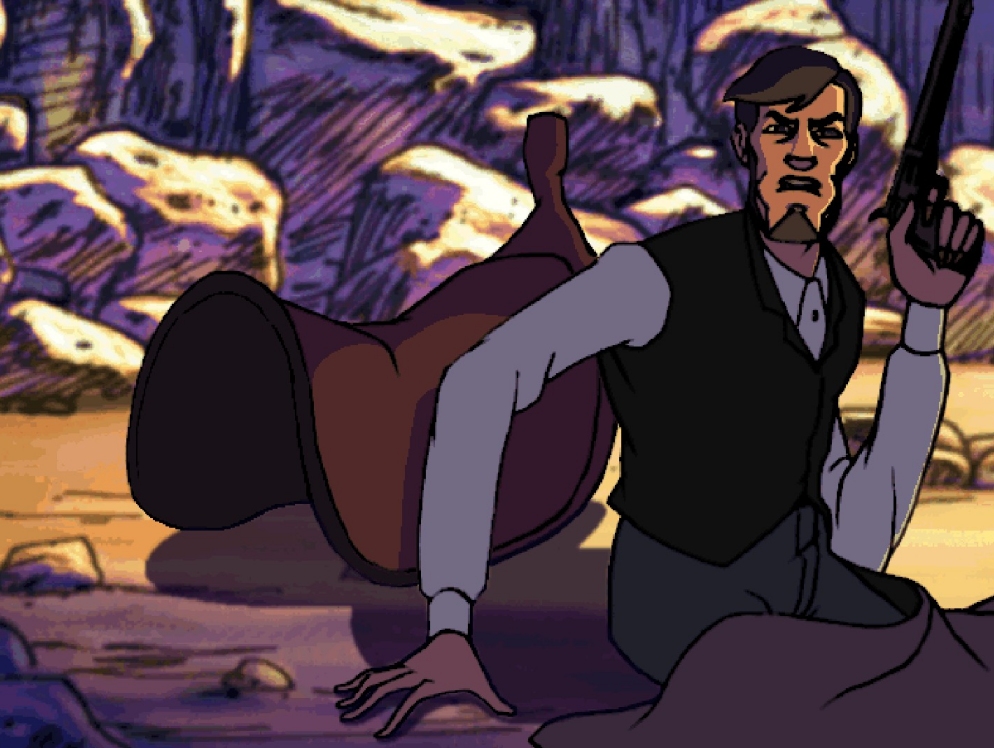
Favourite level… favourite demo… favourite soundtrack… favourite cutscenes… If I had to put together personal Top Fives in categories such as these, LucasArts’ 1997 Old West shooter would probably feature in all of them. Indeed the original is so dear to me I fired up Nightdive’s remaster with more than a hint of trepidation.

Even if the refurbishment had been handled sensitively, £24 for a gilded lily seemed a tad steep. Could the new version really prove almost five times better than the £5 versions that Steam and GOG have been selling for years?
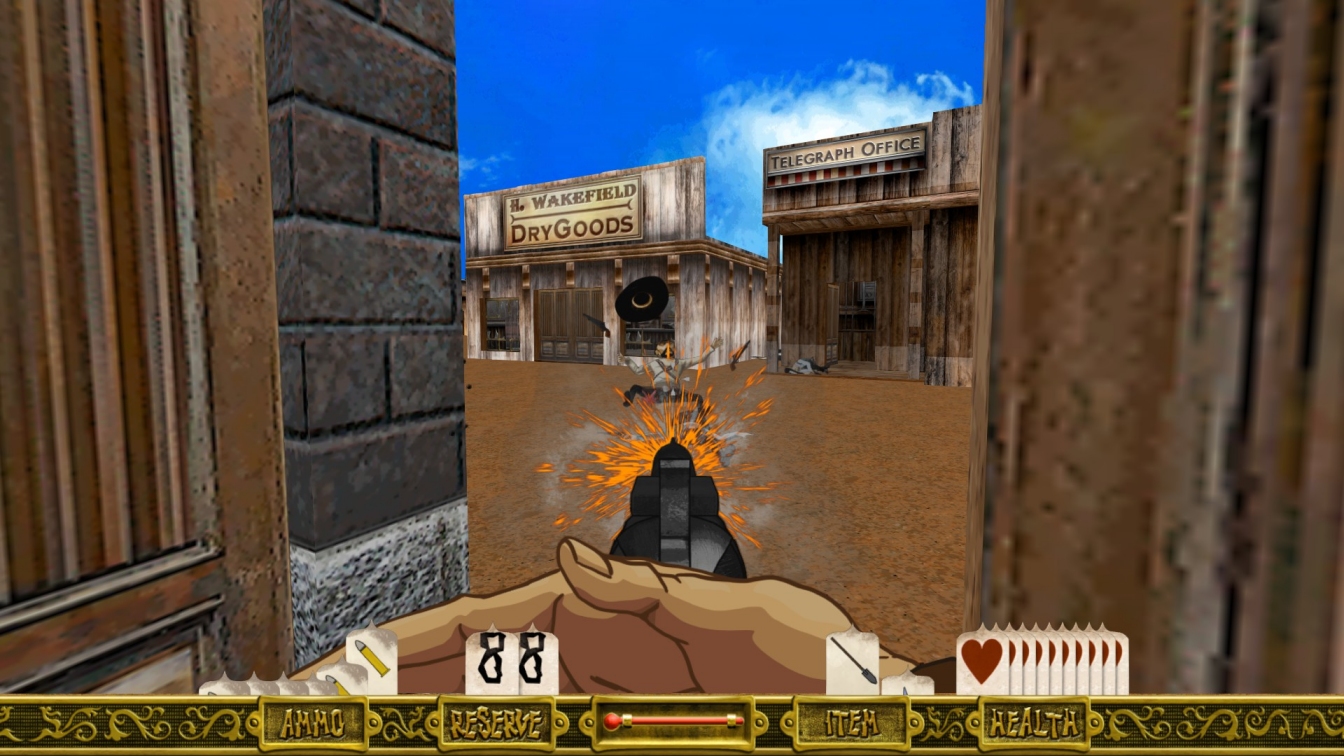
Three hours of rapt fan-firing, shotgunning, dynamite hurling, and canteen slurping later, while I’m happy to report that Nightdive have updated fairly tenderly, none of the changes I’ve seen so far justify that hefty price hike.

Having proper widescreen support and new high-res pin-sharp sprites and textures? Nice, but folk used to playing Outlaws at 1280 x 960 through DREAMM are unlikely to be blown away by the leap in clarity.

^ Outlaws + DREAMM
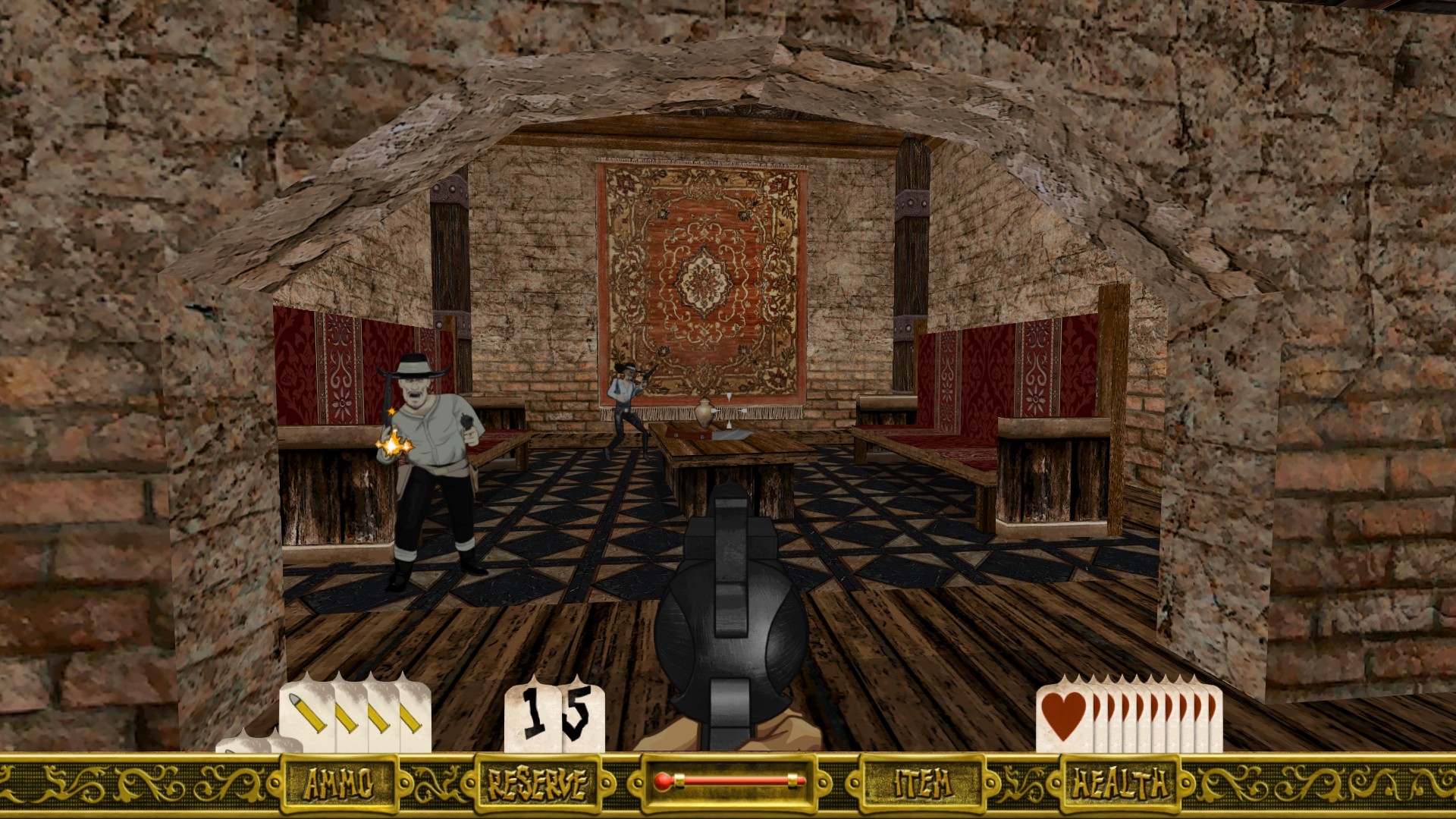
^ Outlaws Remaster
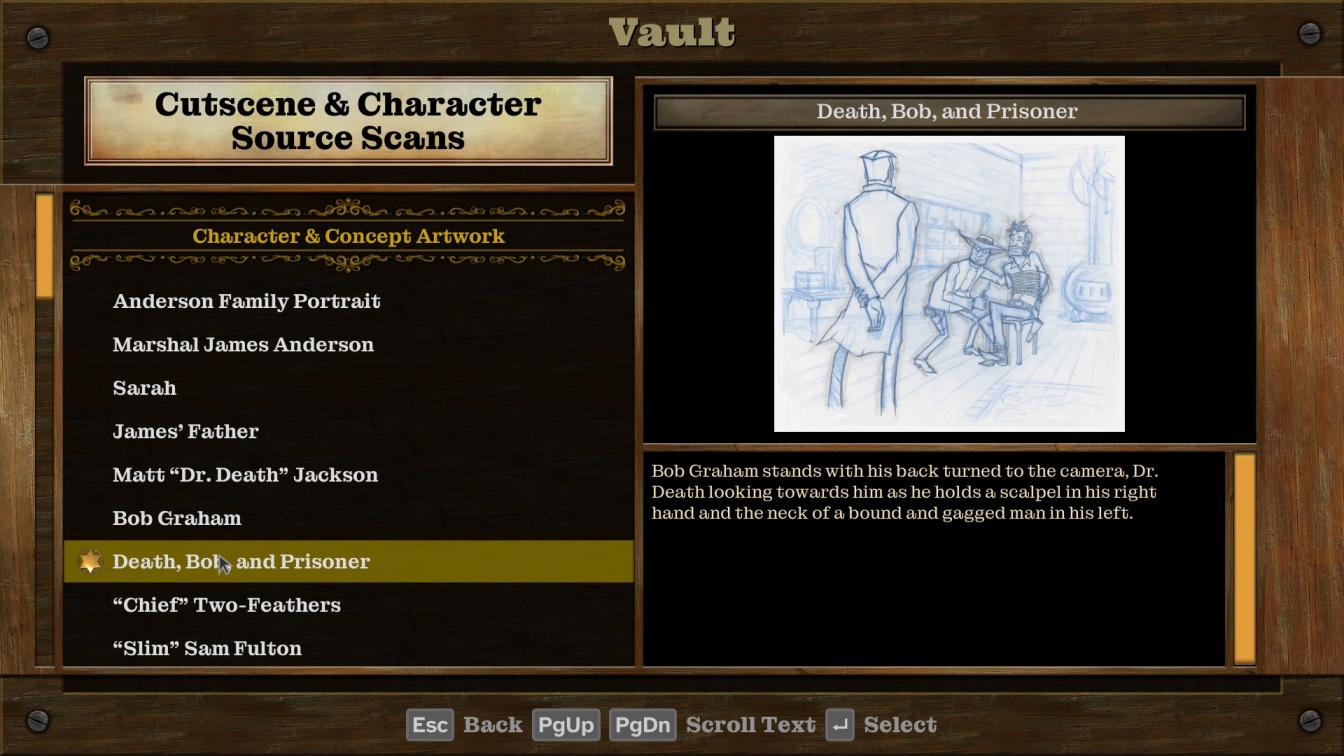
Weapon wheel and an archive filled with previously unseen LucasArts development assets? Again, better than a poke in the eye with a sharp stick, but hardly heaven-sent.

The new menu screen art is arguably inferior to what went before, and, like the profusion of company intro videos and slightly increased mission load times that come with Nightdive’s incarnation, may cause Outlaws old timers to purse their lips.
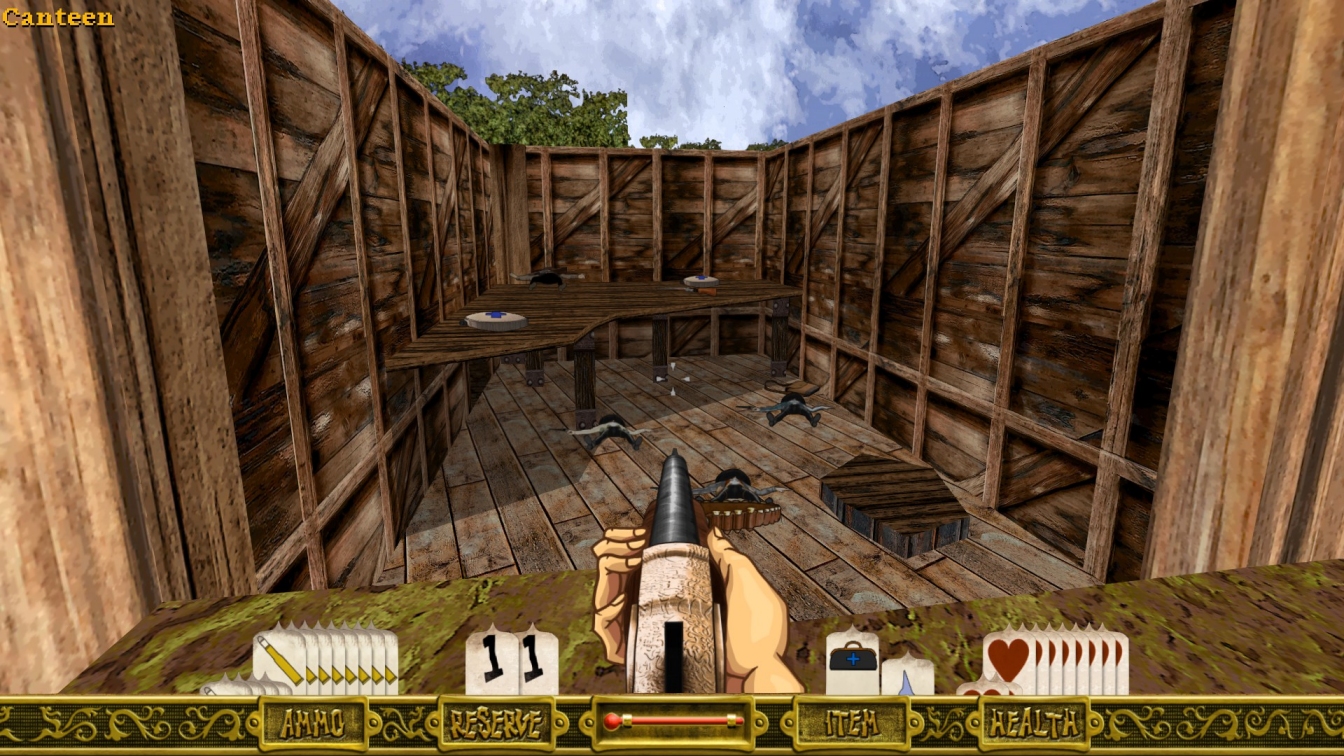
However you choose to play Outlaws today, you’re guaranteed a grand time. The story, the level design, the audio, the art, the AI, the weapons… forgive some potentially exasperating key hunting and puzzle pondering in a couple of chapters, and this is a shooter that gets just about everything right.

Every time I return I find myself surprised by the harshness of the default difficulty setting. In addition to throwing you clean across a room or street, one close-range shotgun blast can send you straight to Boot Hill. Invariably, that vulnerability combined with fine mapmaking, unpredictable baddies, memorable taunts and wonderful ambient audio and music, makes moving through an Outlaws levels an exciting business.
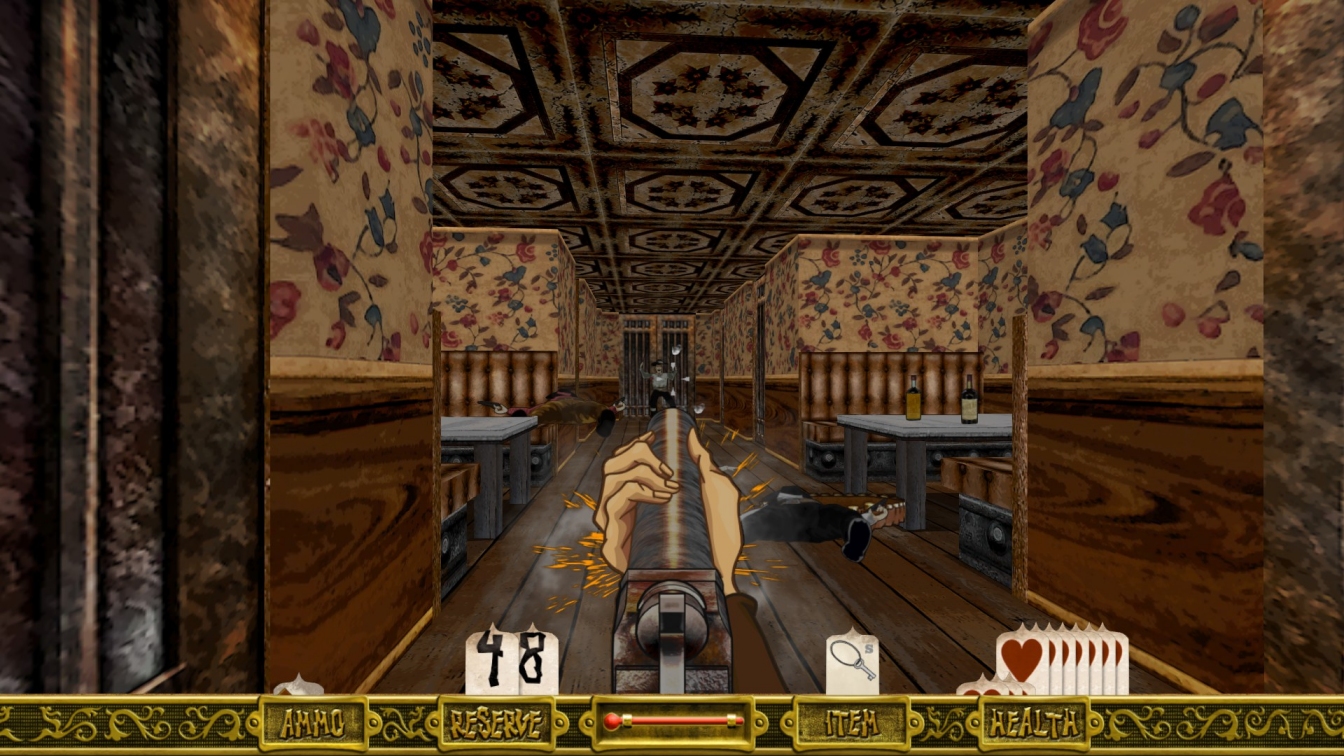
As the quirky cartoonish visuals were never a big part of Outlaws’ appeal, and old versions are problem-free, I’d think hard before splashing out on this pricy remaster.
* * *
Killing Time: Resurrected
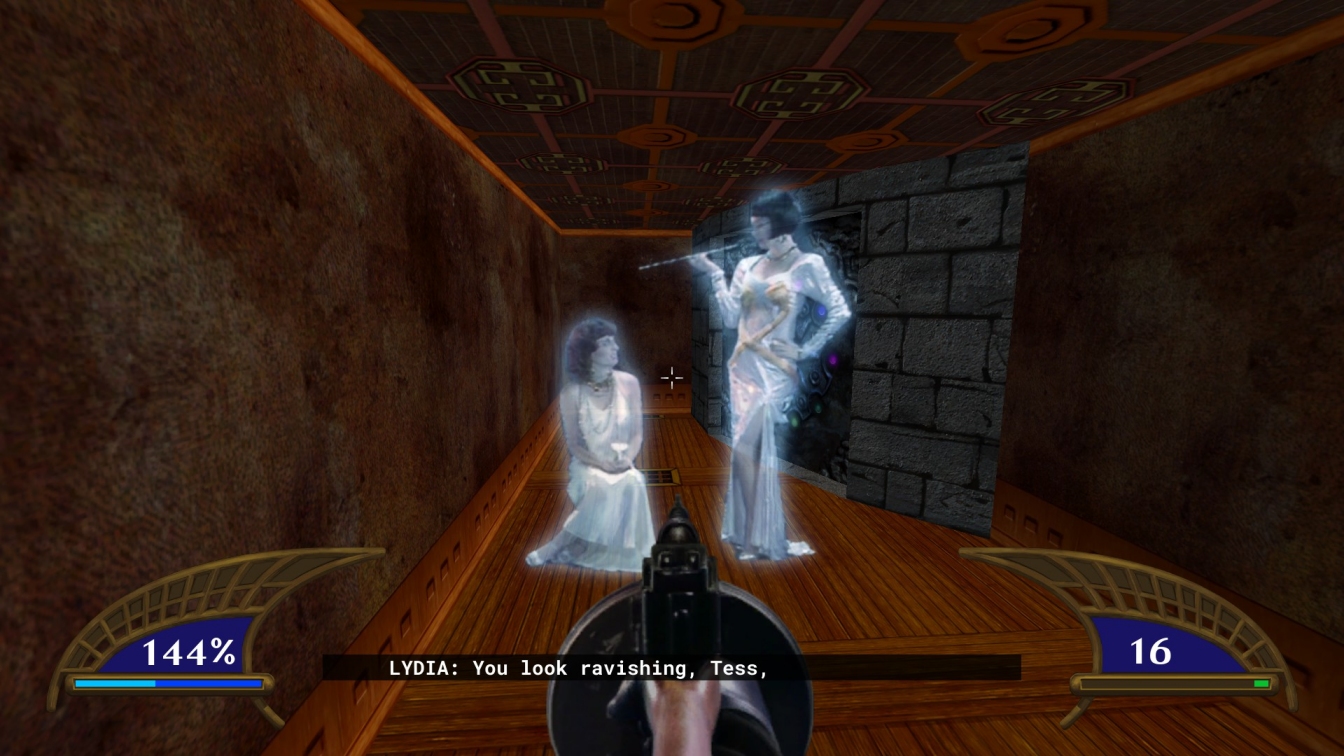
While the combat in auditioner #3 is a mite monotone in comparison with the gunslinging in Outlaws. I can see why serial resurrectionists Nightdive Studios decided to crack open Killing Time’s dusty sarcophagus and get to work.
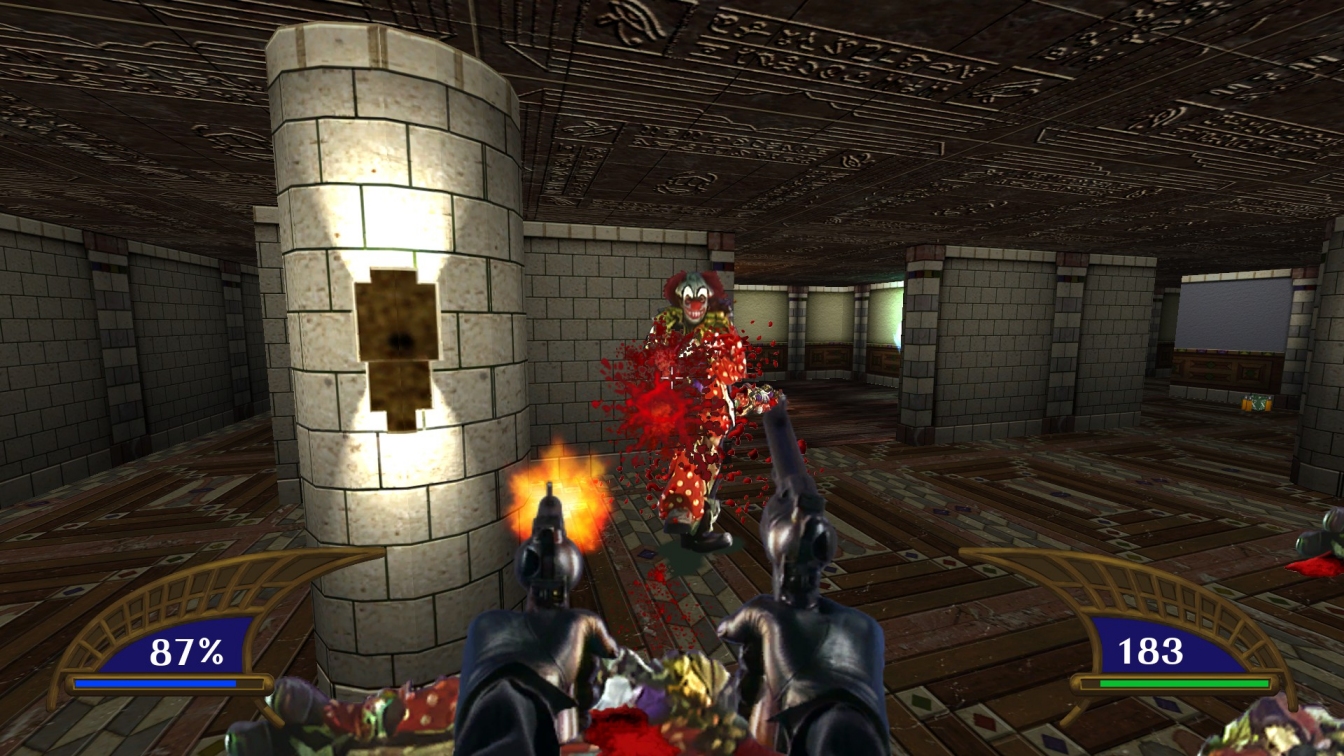
Few FPSs can rival 3DO’s Nineties oddity when it comes to fanciful foes, ingenious exposition, and unapologetic weirdness.

One night in 1932 on a small island off the coast of Maine, wealthy socialite Tess Conway and her guests, staff, and gangster boyfriend, mysteriously vanish. Are the disappearances linked to Conway’s interest in Egyptology and the occult? The answer, unsurprisingly, is a big fat ‘Yes’, but standing between you and a full explanation of what went on during the fateful summer solstice house party, is a lot of Doomy gunplay, a fair bit of exploring and key seeking, and a pinch of puzzle solving.
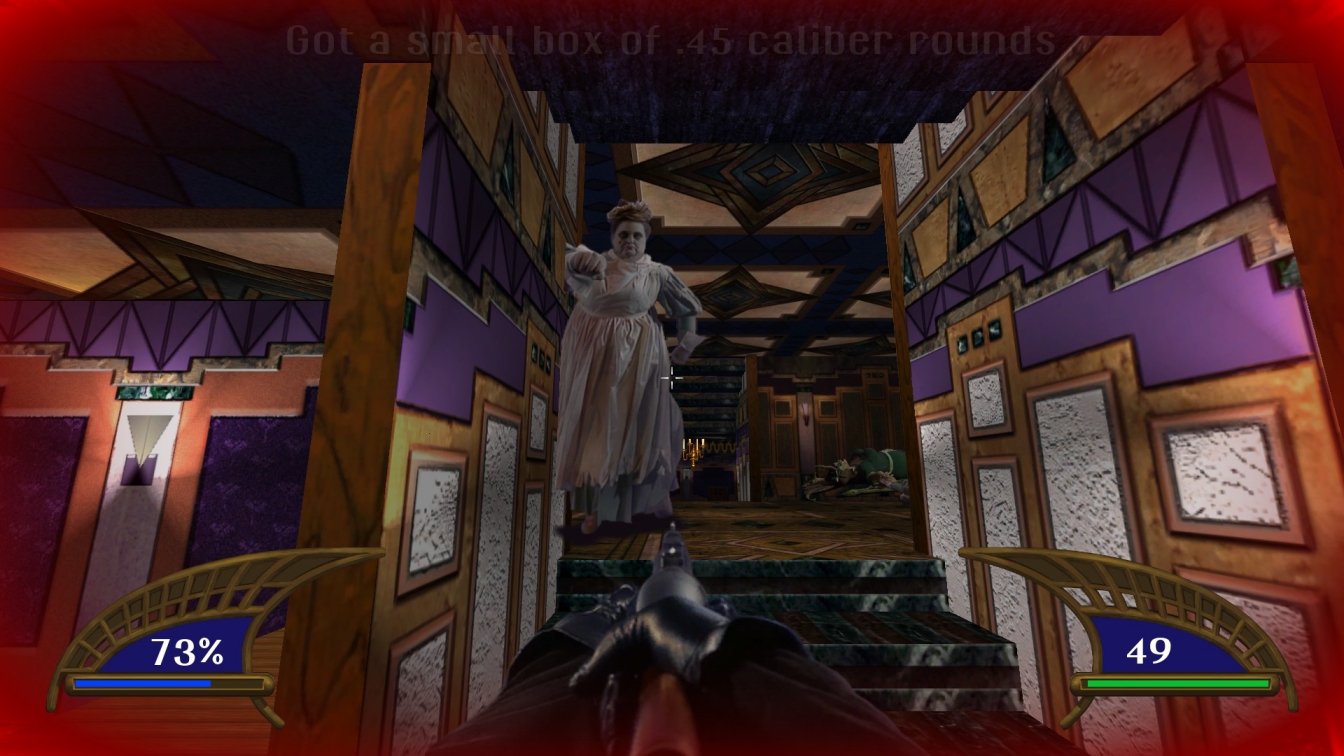
Use of the KEX Engine means the 21st Century visitor to Matinicus Island gets sophisticated lighting, decent physics, and much sharper and more sumptuous textures. Most excitingly, the monster graphics in KTR are based on the 1995 console version of KT rather than the 1996 PC one. This means the weird and wonderful cast of enemies – cleaver-hurling chefs, demonic clowns, winged chamber maids, zombie gardeners etc – are either rendered with the help of FMV or painted clay models. Rarely used today, these techniques produce very striking results.

Once you’ve encountered foes like the pugilistic female cooks, the fireball-hurling ant men, and the two-headed guard poodles at close quarters, you’ll never forget them.

If the monsters were as interesting to fight as they are to look at and listen to, KTR would probably have gone down in history as a true classic, not just a cult one. Instead, bovine AI and a lack of offensive and defensive party tricks, means there’s seldom a need to swap weapons or alter tactics when encountering new threats.

Compensation for the slightly dull and dogged aggro comes in various forms, fortunately. Well acted and often amusing, the ghostly holographic flashbacks that play within the game world when you cross certain thresholds are a real treat. Then there’s the seriously inventive soundtrack. Doing just as much to inject a 1920s/1930s vibe as the boxy, Art Deco-decorated building interiors, Bob Vieira’s quirky score is far too good to mute.

I’m also a fan of the novel way maps are organised. There’s no predictable linear mission sequences here. You wander the island at will, barely aware that passing through certain doors or using certain staircases surreptitiously switches the active locale.

Far more transformative than the Outlaws redux, this one is available for half the price for the next couple of days.

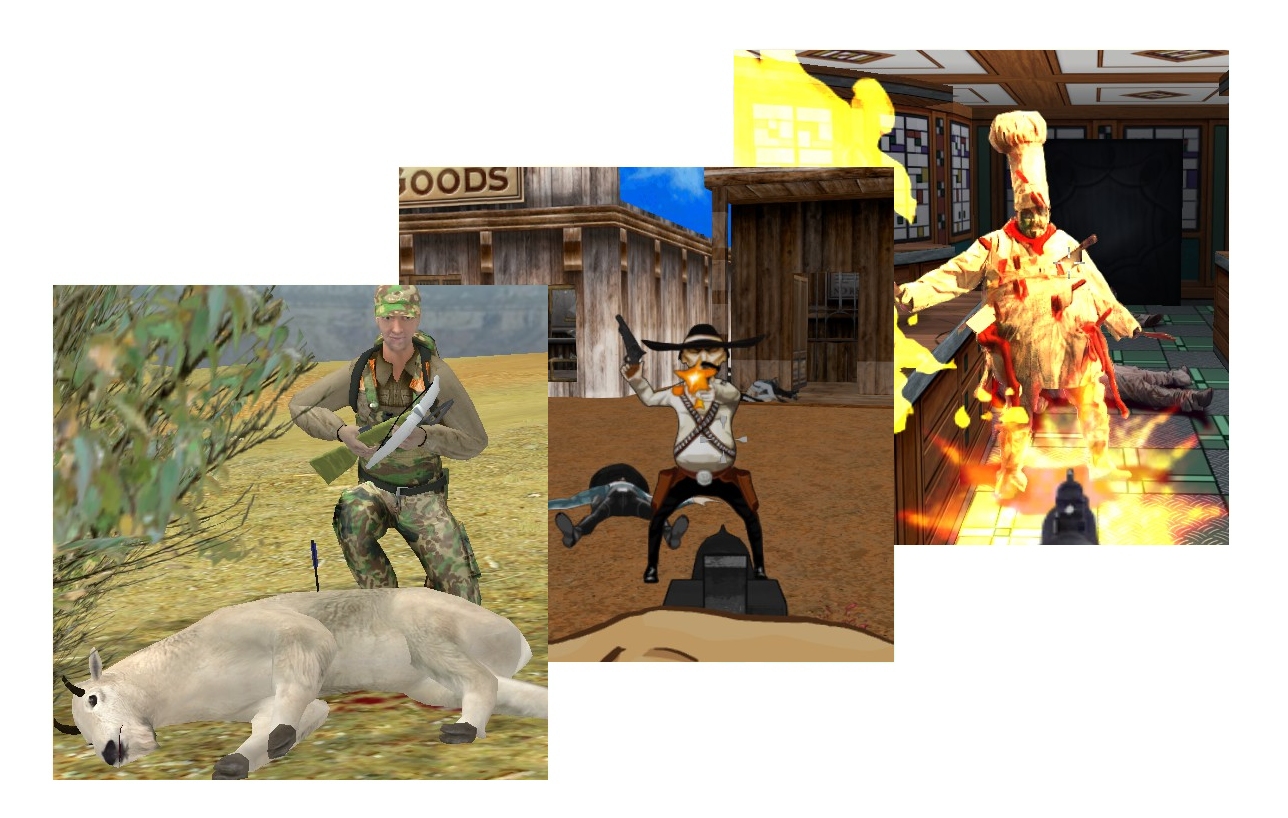
You like hunting, I think this is the first time we have a difference of opinion. Mind you, probably has something to do with the fact that at random points in the winter our house is surrounded by hunters and their dogs who spend the day, shouting, shooting and barking…
Handily, one of those days was yesterday, when two of the lovely chaps decided to park in our private (signposted) car park (We are a km from the nearest house) and then walk past our front door carrying rifles.
We told them to bugger off.